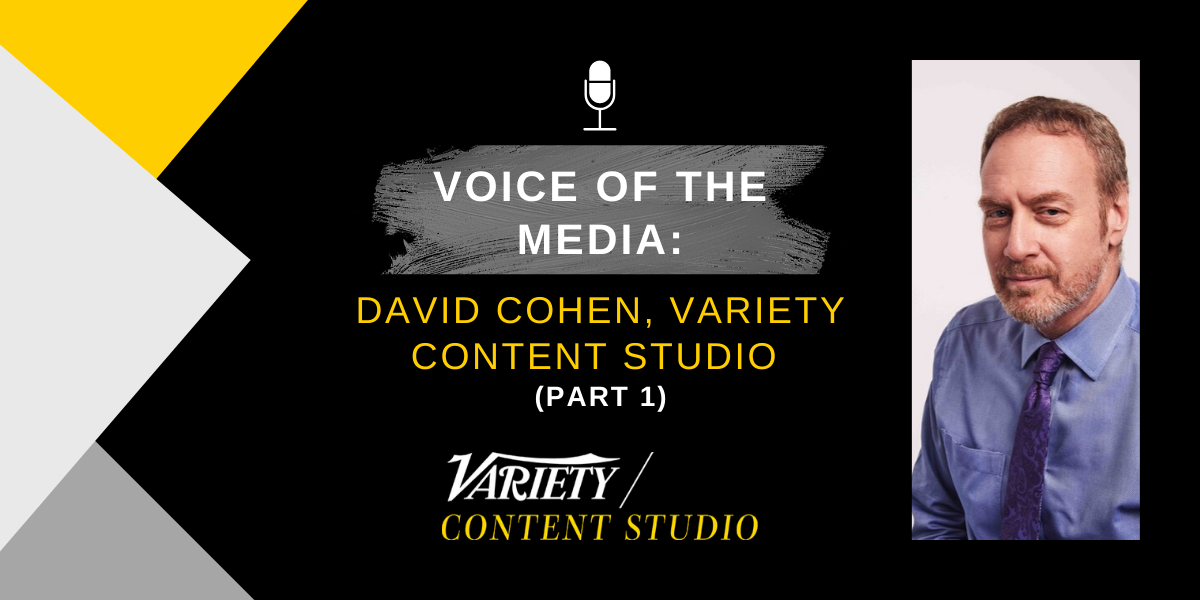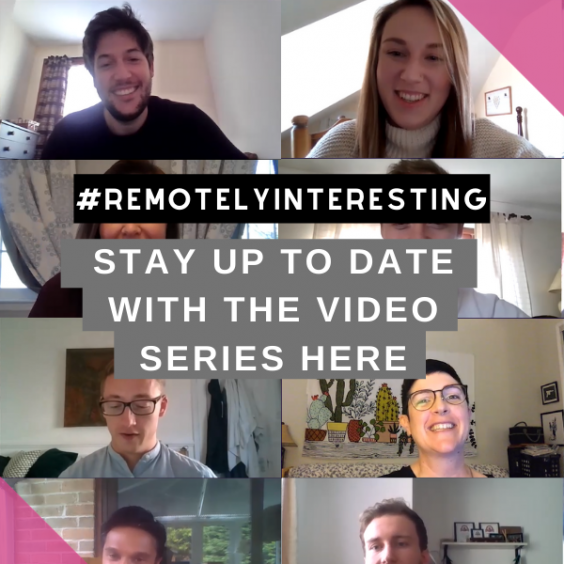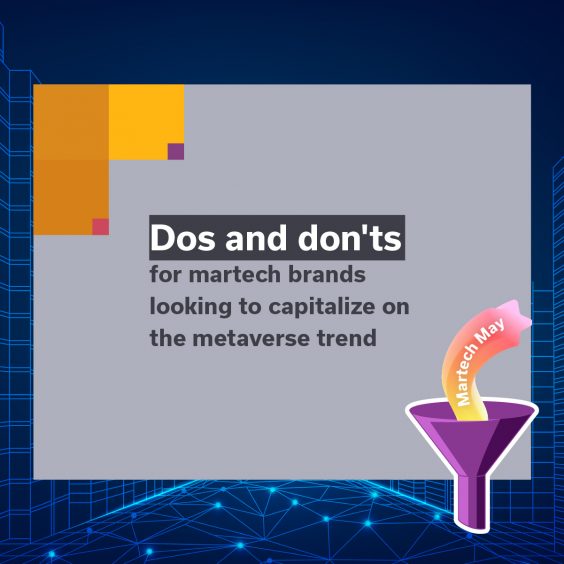For over 20 years, David Cohen has been writing about the media and entertainment industry as a reporter, editor and columnist for Variety. He’s also written six books on films and filmmaking. A few years ago, he made the move into branded content, and is now a Senior Producer at Variety Content Studio.
In the first of this two-part interview, he discusses how both the media landscape and the media and entertainment (M&E) industry have changed, his role at Variety Content Studio, the rise of branded content, and the impact of COVID-19.
You’ve been writing about the media industry for over 20 years. How did you start out?
I was in the entertainment industry when I started freelancing for Variety and have either been in it or been covering it for my entire adult life. I’ve been writing about movies, film, television, production, entertainment and technology for 20 years.
The media landscape has changed a lot in that time. What have been some of the biggest changes from your perspective, as a journalist covering this industry?
I had the honor of having a technology column in the final edition of Daily Variety, and the argument that I made in that column was that it was the mobile phone—the iPhone and its brethren—that, essentially, blew up the whole media landscape. It wasn’t the internet because as long as the internet was still on your desktop and you were measuring your download speeds in kilobytes per second, that didn’t blow up the media landscape. But when it was megabytes per second, in your pocket, that blew up the whole business model. If you look at the timeline of the introduction of fast internet mobile devices and the decline of journalism as we’ve known it, they line up pretty well. Instead of having to buy a copy of Variety, you can get it on your phone.
What have been some of the biggest changes in the media and entertainment industry?
TV and movies have done a complete body switch, like something out of science fiction. Before home video, movies stuck around. There were no windows, so movies played as long as people would go see them, and the economics of theatrical exhibition were such that it was advantageous for the movie theater owner to play a movie a long time. The longer it played, the bigger the take of the box office they got.
Television was completely ephemeral. It was here; it was gone. There was no YouTube. There was no finding a clip on the internet. Syndication wasn’t even really a thing when I was a kid. TV was aimed at a broad audience, and movies were more niche.
Movies could aim at a very specific audience. They could play forever. As a result, movies could be sophisticated and challenging, and TV had to be very dumbed down because it had to reach a big, mass audience in one airing. Then everybody would be talking about what was on TV at the water cooler.
Now, thanks in large part to changing technology—the emergence of home video, DVR, cloud DVR, and how that has changed the distribution patterns for theatrical means—movies have a short window and everything is aimed at the opening weekend, which is like the old original airing on TV. They’re dumbed down and are trying to get the big audience for the opening weekend because it’s so important. The studios still get the biggest take of the opening weekend, so that’s what they really care about.
TV has proliferated endlessly. There used to be a very limited number of channels. Now, there is an infinite number of streaming channels available. TV is super niche, and it’s always available, on demand, and it’s movies that have become kind of ephemeral. If I missed that movie in the theaters, is it on streaming yet? Pay per view? If it’s too much on VOD, I’ll wait until it’s on Netflix.
And the content has completely flipped personalities to reflect that. TV is sophisticated, and challenging, and niche, and the movies all feel like they’re made for the lowest common denominator—except for indies, which are becoming harder to sustain because of the high marketing costs. To me, with all the things that have happened—CG, digital, and streaming—that is the most profound change.
What about other areas of the media and entertainment industry – like games and music?
When I was a little kid, if video games existed at all they were so primitive. Now, there are these deep storytelling wells and these immersive worlds you can disappear into.
The music business is different. I grew up at a time when Top 40 radio was a thing. There might still be Top 40 radio, but I don’t feel like there’s a youth culture that’s unified by Top 40. I think it’s much more splintered.
What can you tell us about Variety Content Studio and your role there?
The content studio was started because we knew, at Variety, that part of our response to this new digital era for publications of all kinds was that we needed to have this additional revenue stream. So many of our traditional revenue streams have been cut back for all the structural reasons that everybody knows about—the ways journalism has been impacted by digital. We were aware that this [shift to branded content] needed to happen. I was one of the first two people in the content studio, and we haven’t grown a lot by head count; we tend to have a crew model where we staff up according to the project. I went there to do video. But as it happened, we developed a print business that has really become my specialty. I have found it fascinating and rewarding. It’s a different world than straight journalism.
What are the biggest differences between journalism and branded storytelling?
I am not, by my nature, naturally inclined to be an advertiser. It has taken deliberate effort and work on my part to think in terms of client service, brand messaging, and about putting our preferences second to the brand’s. It’s a service business. And part of it, for us, is being able to anticipate what are they trying to do.
What I find interesting about the brand storytelling space is that there are a lot of people on the brand side who are not comfortable with it. Most of the people who went into business didn’t want to be in a creative field. They went into something safe where there’s a paycheck and they weren’t going to have to worry about being a starving artist. They went into business to have something that was more sane, and now they find they’re in this creative field that is highly unpredictable, where success is difficult to measure, and not assured. Every bit of content is a shot in the dark. Maybe it works and maybe it doesn’t. We joke about people putting in their business plan that we’re going to make a viral video. Viral is an outcome. It is not a strategy.
Then, the flipside of that, on the storytelling side, are people like me. I was a theater major. I went out to be a stage director. I didn’t want to be working with spreadsheets. And today, I’m working with KPIs, and spreadsheets, and return on investment, and all these things that I really didn’t want to do.
I think a lot of storytellers are in the same situation. This isn’t what we want to do. Everybody is in this uncomfortable situation of doing the thing they set out to avoid. Nonetheless, I think it works.
What’s behind the rise in branded content?
Someone asked me recently whether I believe in branded content. I think that it is necessary and it is an inevitable next step because people will not sit still for commercials anymore. The interruptive model is falling apart because people just don’t want to be bothered. The print ad that’s on a facing page from your article is only moderately annoying. Ten of them in a row might be very annoying because then you’re leafing through pages to find the rest of your article. A big block of commercials in the middle of a show? A lot of viewers are just like, click, I’m done, I’m going to bed.
The interruptive model is falling apart and there isn’t a good alternative except to put your messaging in content that people choose to consume. They choose to consume it because they think they’re going to enjoy it. Enjoyment can take a lot of forms. You could be scared. You could be angered. It can be any kind of emotional response. It doesn’t have to be “I had fun with that”, but it’s going to be, “I’m glad I watched that. I’m glad I read that.”
It’s promoting a brand or a product, but you’re still glad you read it or watched it because it entertained you in some way, or it informed you. You felt like the information was useful and like you weren’t being obviously spun or sold to. I feel like this is where a lot of the advertising world will inevitably have to go.
By the way, this isn’t really new. The great artists and playwrights of the past had aristocratic patrons who certainly had their own messaging that they wanted in the product, even if they didn’t interfere very often. Everybody knew who you could and could not criticize, or who had to look good or bad in your history plays. Go back to the early days of television. Milton Berle was Texaco Theater. It was a branded show and it was the biggest show on television. This isn’t a new concept. It’s just something that we’re having to reinvent under different conditions.
With the traditional media landscape shrinking, are more companies looking to embrace branded content and is video starting to become a more popular format?
This is a funny moment to ask that question because I think everything is about to change due to the coronavirus. If you’d asked me that question eight weeks ago, I would’ve probably gone on about people discovering that video is expensive.
I think people are getting used to branded content. What we’re seeing within the entertainment industry and with our endemic advertisers is that as people see it and understand what it is, they’re more interested in having it for themselves. That’s partly because we do a good job at it, but also just because the whole concept is unfamiliar to people. It works better for some things than others, and sometimes, they have to come back to us and say, “Can you do something like this, but do it this way because that works for us?”
However, video is expensive. There was this whole thing about publications pivoting to video a couple years ago. Everybody found out it’s a lot more expensive to create a five-minute video than a thousand-word written piece. It’s no easier to monetize and it’s very difficult to sustain a pivot to video unless you’ve got a hefty money stream.
We’re now in a moment where standards are changing because of the constant use of video conferencing. Over the next few months, the solutions for doing what we do from home are going to get better. That’s going to happen quickly and it’s going to need to happen because there’s demand for it. People are going to get used to doing it this way and seeing it this way. So what’s acceptable for video, what works, and what feels authentic is evolving now.
Species evolve when there’s pressure on a population. If the environment changes and there’s pressure to evolve, little advantages accumulate quickly. I think we’re in that moment now for media where there’s enormous pressure to evolve fast. Things that worked great six weeks ago aren’t working at all right now. Everybody is pivoting, and everybody is looking at everybody and seeing what are they doing that works, or what they tried that we think didn’t work at all. Everybody is experimenting. The whole landscape is going to look different when this is all over. The players and the business models are going to be different.
It’s becoming increasingly clear that we’re also going to come out on the other side of this in an economic shambles like nothing our generation has even imagined. We’re talking Great Depression territory. So what works when money is really scarce? I think that people would like to be doing video because it’s immediate and holds people’s attention. This is an event that changes people at deep levels.
I think this is going to create a new normal. In this new world, everybody is going to be looking for what are the messages that work and how do we deliver them? It’s going to come down to choices about how to tell your story and where to tell your story. Then, at the deepest level, what story do you want to tell?
In the second part of our interview with David, he shares his advice for brands looking to create branded content and insight into his campaigns for Oscar-winning films and B2B media tech brands.
If you need help telling your brand’s story, please contact Kim Willsher at (+1) 310 773 3760 or kimw@rlyl.com.




